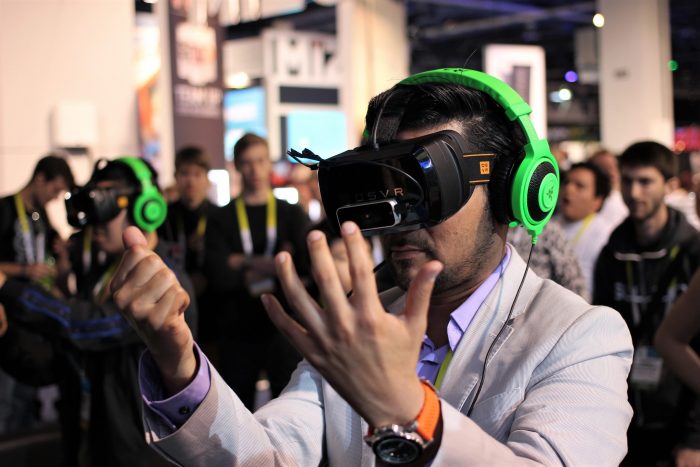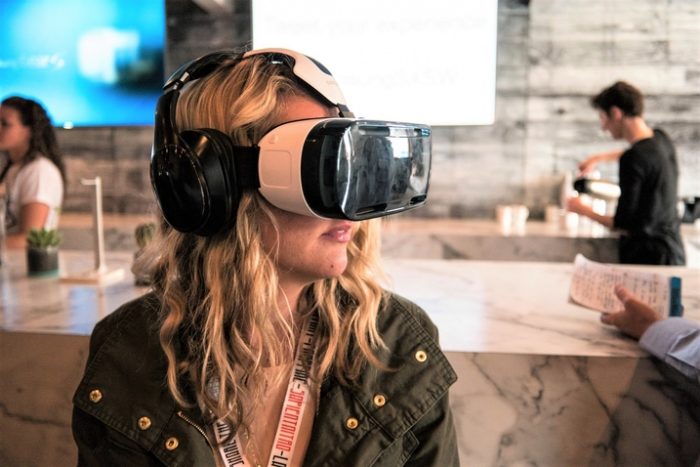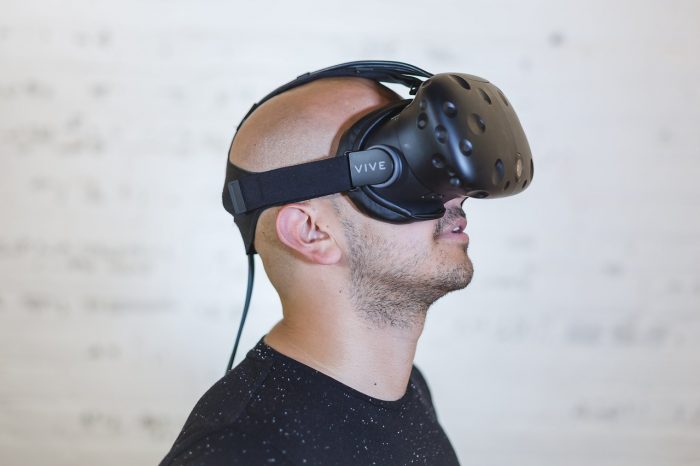
In today’s customer-centric marketing campaigns, marketers are always looking for an edge against their competitors regardless of business, industry or targeted customer demographic. Virtual reality technology has created some incredible opportunities for savvy marketers and business owners to use in their campaigns. The technology–which was considered as far-fetched science fiction just a few years ago–has begun taking the business world by storm. The IDC reports that about 30 percent of Forbes’ Global 2000 companies are now using or experimenting with VR or Augmented Reality. [1]
Incredible New VR Business Opportunities
Digi-Capital reports that virtual reality, or VR, will grow into a $30-billion-dollar annual market by 2020, and augmented reality, or AR, might grow even larger in time, but the market will grow somewhat more slowly. [2] Already, top companies–such as “IKEA, McDonald’s, Coca-Cola, and the New York Times”–are using VR technology to engage, entertain and captivate customers and prospects. [3] The total VR/AR market should reach $108 billion by 2021.
What is Virtual Reality?
Special software and hardware create an artificial environment that is so fully immersive that it seems real to the senses. The software simulates the senses of sound, sight and even touch to create a holistic habitat. Viewers can experience deep sea surroundings, feel what it’s like to skydive, explore different planets and experience other incredible sensations by using a VR headset. Body sensors can stimulate the sense of touch for a more immersive experience.
Facebook and Google Join the VR Party
Facebook and Google have adopted VR in a big way by developing the technology that allows other people to experience VR. Facebook’s Oculus Rift VR headset, which is compatible with Xbox One, sells for $600, but the price will drop as other companies enter the market. Google began testing VR back in 2014 and now offers its Google Cardboard headset and plans to develop a product that rivals the Oculus Rift.

How Companies Can Use VR to Differentiate and Promote Their Businesses
VR can be used in almost limitless ways to cash in on consumer trends, create memorable promotional campaigns and brand companies indelibly in their customers’ consciousness. Typical marketing uses for VR technology include the following examples employed by well-known companies:
- Samsung Gear VR
The company uses VR to demonstrate product features, attributes and functions. [4] - Tom’s
Tom’s flagship operation in Venice, California, allows customers to enjoy a fully immersive experience in the “virtual reality chair” where a trip to Peru helps to communicate the company’s mission. - The New York Times
The landmark newspaper uses VR to enhance its storytelling with exhilarating and immersive details that put viewers on the scene. [4] - Lowe’s
Lowe’s uses VR to help customer make better choices by seeing how paint and furnishings will look in their homes. 20 “typical floor plan” holographic “rooms” use Google Cardboard and Oculus Rift technologies to match customer’s own rooms at home. [4] - Zenith Aircraft Company
The company sells model kits of its top planes, and VR technology allows customers to experience what flying in the real plane that the model represents feels like. [5] - IKEA and Carnival Cruise
IKEA and Carnival Cruise both used VR to tell their stories. IKEA used the technology to show customers how to virtually remodel their kitchens while Carnival Cruise documented the appeal of a Caribbean vacation. [5] - Coca-Cola
Coke has always experimented with the latest advertising trends, and the company used the Oculus Rift to create a virtual sleigh ride in Santa’s sleigh to great customer and media acclaim. [6] - Volvo
One of Volvo’s VR approaches involved promoting its XC90 SUV with a virtual test drive that drivers could use when it wasn’t practical visit a dealer for a test drive. [6] - Patron Tequila
This highly regarded tequila company re-created the experience of hiking up a dangerous mountain to create an immersive, tactile experience for its customers. [6] - Lamber Goodnow
This reputable law firm has used virtual reality and brought it into the courtroom. They use virtual reality to rebuild scenes of accidents.
There are–virtually–thousands of example of companies using VR to market products to their customers, inform them of important issues, brand their products and services and differentiate their businesses from those using run-of-the-mill marketing approaches.
Ideas for VR Marketing Campaigns
The possibilities of VR campaigns run the gamut from product demonstrations to tours of other planets, space travel and visiting science fiction, historical and magical settings. Customers can enjoy the experience of teleporting to another setting in an instant. Companies can re-create historic moments such as the moon landing or Lee’s surrender to Grant at Appomattox. Nobody would ever forget the Alamo after experiencing a virtual reconstruction of Texas’ signature massacre that’s motivated soldiers for generations. Ideas for VR marketing campaigns include:
- Product demonstrations
- Virtual tours of museums and art galleries
- Historical trips into a company’s past
- Educational experiences about scientific and medical developments
- Tours of foreign cultures
- Virtual driving, flying, hiking, climbing, spelunking and sailing experiences
- VR-level demonstrations of normal wear and tear and the consequences of not caring for products
- Examples of untreated health disorders
- Enhancement of journalistic stories
- Examinations of hidden and microscopic worlds
- Travel highlights
- Virtual tours of homes, apartments, motel rooms and conference venues
- Piloting a lunar module, tank, racecar or other vehicle virtually
VR offers strong competitive advantages in marketing and gives companies the ability to engage their customers in exhilarating ways. Customers can get 360-degree virtual reality, re-creations of seminal events, impossible experiences and the ability to visualize how products will look and perform in their own living environments. The technology is expected to grow at exponential rates for the next decade, and customers already admit that they support companies that use VR more fully than those that don’t. [5] Test drive a VR application, and find out what the hype’s all about and how decision-makers can incorporate VR into dynamic and appealing marketing campaigns.
References:
[1] Impactbnd.com: How Virtual Reality is Becoming Mainstream for Marketers
www.impactbnd.com/blog/virtual-reality-in-marketers
[2] Digi-capital.com: After mixed year, mobile AR to drive $108 billion VR/AR market by 2021
www.digi-capital.com/news/2017/01/after-mixed-year-mobile-ar-to-drive-108-billion-vrar-market-by-2021/
[3] Entrepreneur.com: 5 Ways to Incorporate Virtual Reality Into Your Marketing Plan
https://www.entrepreneur.com/article/279001
[4] Forbes.com: 6 Of The Best Marketing Uses Of Virtual Reality
www.forbes.com/sites/michellegreenwald/2016/06/15/6-of-the-best-marketing-uses-of-virtual-reality/#7bb69df565cf
[5] Contentmarketinginstitute.com: How Virtual Reality Could Change Content Marketing
contentmarketinginstitute.com/2017/01/virtual-reality-change-marketing/
[6] Mbryonic.com: Virtual Reality Development Studio London
mbryonic.com/best-vr/
Find a Home-Based Business to Start-Up >>> Hundreds of Business Listings.

















































